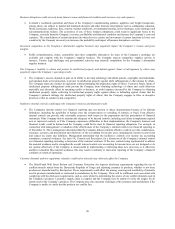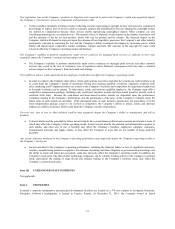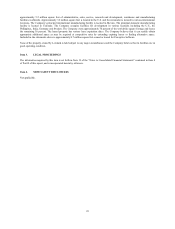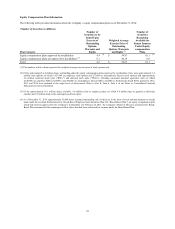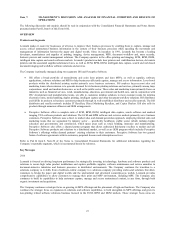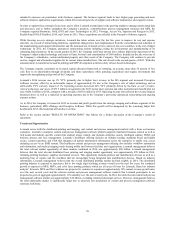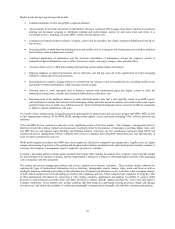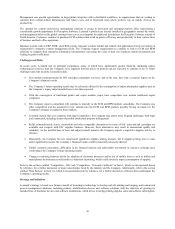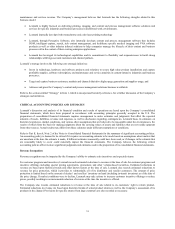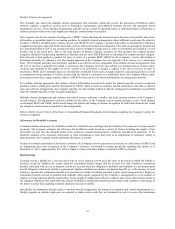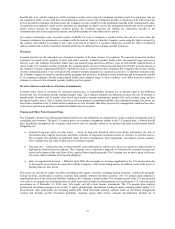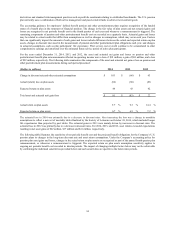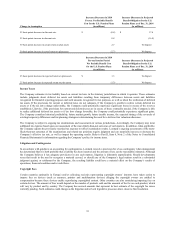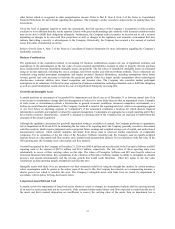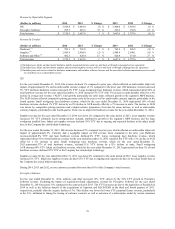Lexmark 2014 Annual Report Download - page 33
Download and view the complete annual report
Please find page 33 of the 2014 Lexmark annual report below. You can navigate through the pages in the report by either clicking on the pages listed below, or by using the keyword search tool below to find specific information within the annual report.Market trends driving long-term growth include:
Continued adoption of color and graphics output in business;
Advancements in electronic movement of information, driving a continued shift in pages away from centralized commercial
printing and document scanning to distributed printing and multi-channel capture by end users when and where it is
convenient to do so, including via smart MFPs, mobile devices and the web;
Continued convergence between printers, scanners, copiers and fax machines into single, integrated multifunction and all-in-
one devices;
Increasing ability of multi-function printing devices and mobile devices to integrate into business process workflow solutions
and enterprise content management systems;
Continued digitization of information and the electronic distribution of information, driving the explosive growth of
unstructured digital information, such as office documents, emails, web pages, images, video and audio files;
Customer desire to have a third party manage their printing and document output environment;
Ongoing emphasis on improving business process efficiency and driving costs out of the organization by better managing
enterprise content and associated processes;
Increasing need to capture, manage and access content from any location or any web-enabled device, including mobile access
and mobile workflow participation, while ensuring content security;
Growing desire to unify structured data in business systems with unstructured paper and digital content to make the
unstructured content more valuable and actionable within business functions; and
Increasing need in the healthcare industry to unify structured patient data, that is now typically stored in an EMR system,
with unstructured content, that includes medical imaging studies and other patient documents and content such as lab reports
and physicians notes, to enable easy unified access by clinical staff and referring physicians, across the healthcare continuum
to improve clinical and business outcomes.
As a result of these market trends, Lexmark has growth opportunities in monochrome and color laser printers and MFPs, MPS, as well
as fleet management solutions, ECM, BPM, DOM, intelligent data capture, search, and medical imaging VNA, software products and
solutions.
Color and MFP devices continue to represent a more significant portion of the laser market. The Company’s management believes
that these trends will continue. Industry pricing pressure is partially offset by the tendency of customers to purchase higher value color
and MFP devices and optional paper handling and finishing features. Customers are also purchasing connected smart MFPs and
content and process management software solutions and services to optimize their document-related processes and infrastructure in
order to improve productivity and cost.
While profit margins on printers and MFPs have been negatively affected by competitive pricing pressure, supplies sales are higher
margin and recurring. In general, as the printing and imaging market matures and printer and copier-based product markets continue to
converge, the Company’s management expects competitive pressures to continue.
Lexmark’s dot matrix printers include mature products that require little ongoing investment. The Company expects that the market
for these products will continue to decline, and has implemented a strategy to continue to offer high-quality products while managing
cost to maximize cash flow and profit.
The content and process management software and services markets serve business customers. These markets include solutions for
capturing all types of unstructured information such as hardcopy, photographs, emails, images, video, audio and faxes as well as
intelligent indexing, archiving and routing of this information to streamline and automate process workflows while managing changes
to both content and processes and automating governance and compliance policies. These solutions help companies leverage the value
of their unstructured information by connecting it with existing enterprise applications and making it available in context within
processes so that businesses can make better and faster decisions to enhance growth, improve productivity, lower costs and improve
customer satisfaction. These markets also include solutions that help businesses understand existing processes, design and manage
new processes, and enable the assembly of content into meaningful communications internally and with their customers and partners.
29



